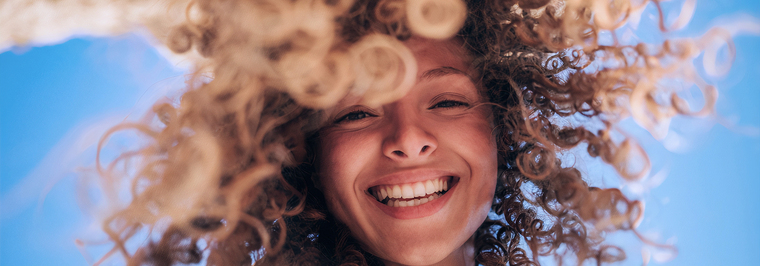Cyst – this is a pathological growth that occurs in the area of the tooth root. Conservative therapy is effective only at the initial stage. If the cystic formation continues to grow, it can only be removed surgically. AESTHETE dental clinic offers tooth cyst removal services.
Tooth cyst – what is it
The growth is a cavity with a dense shell filled with purulent content. This capsule gradually grows, which can lead to complications. It can provoke purulent-inflammatory processes, grow into the maxillary sinus, and cause inflammation of the jawbone. Therefore, it needs to be removed.
At the initial stage, conservative therapy is possible. The doctor gains access to the cyst through the tooth canals, pumps out the pus, and performs antiseptic treatment. The procedure is repeated until the cystic formation stops increasing in size and all the contents are removed.
A developed cyst can only be removed surgically.
Classification
Cystic formations are classified by location and cause of occurrence.
Common types of cysts:
- Root cyst – occurs at the apex of the tooth root;
- Residual cyst – may appear after improper removal of a tooth;
- Follicular cyst – forms from a sac surrounding an unerupted tooth;
- Retromolar cyst – localized near the wisdom tooth.
In children aged 7-10 years, such growths may appear during tooth eruption. In this case, the gum swells, and a sac filled with purulent or serous mass appears.
Symptoms
Cystic formations usually arise as a result of progressing caries, pulpitis, or periodontitis, when an infection penetrates through the root apex. Other causes that contribute to their appearance are:
- Jaw or individual tooth injury;
- Complicated tooth eruption;
- Poor-quality prosthetics causing uneven distribution of chewing load;
- Gum inflammation;
- Poor dental care;
- ENT diseases accompanied by complications.
Stress, frequent fatigue, and periodic hypothermia are additional factors that increase the likelihood of cystic formations.
A cyst develops asymptomatically for a long time, which makes it difficult to detect. Often, a doctor discovers the growth during a preventive examination, so we remind you of the need to visit the clinic twice a year.
Noticeable symptoms appear when the cystic formation has grown. These are:
- Dull pain;
- Swelling, which can spread from the gum to the face;
- Discomfort when pressing on the tooth;
- Enlarged lymph nodes;
- Headache – typical when the cyst grows into the maxillary sinus;
- General malaise.
These symptoms should not be ignored. Any discomfort or pain is a reason to see a doctor.
Contraindications
In some cases, the removal of cystic formations is not recommended. A relative contraindication to surgery is inflammation of the oral mucosa, which increases the risk of infection in the surgical wound.
Absolute contraindications are:
- Blood clotting disorders;
- Chronic diseases in the decompensation stage;
- Acute infectious diseases;
- Oncological diseases.
If a cyst is detected in a pregnant woman, its removal is preferably postponed until after the baby is born.
Preparation for tooth cyst removal
No special preparation is required unless it is implied by the chosen type of anesthesia.
Before the surgery, doctors perform diagnostics. It is necessary to:
- Examine the oral cavity;
- Take images using X-ray or computed tomography to assess the condition of the dental system, determine the size of the cyst, and its location.
Laboratory tests may be required to identify contraindications.
Preparatory measures may also be necessary, such as:
- Treatment of caries and other diseases of the teeth and gums;
- Endodontic treatment – cleaning and filling of root canals;
- Oral sanitation;
- Nerve removal – performed during tooth-preserving surgery.
Procedure for tooth cyst removal
Doctors try to preserve the tooth, but in some situations, this is impossible: for example, if the root is immersed in the cystic cavity more than half its length, as well as in cases of increased tooth mobility or a significant crack on the root.
Modern dentistry widely uses laser removal technologies. The surgeon uses a laser beam to excise the growth while simultaneously disinfecting the area being treated. This method avoids pain and bleeding, and shortens the recovery period.
There are three common types of surgery.
- Cystectomy is used when it is necessary to remove a small cyst affecting one or two teeth. In this case, the cyst is removed along with the capsule. Sometimes a resection (removal) of one-third of the tooth root apex is performed.
- Cystotomy is necessary if the cystic formation affects at least three units in the dental row, and its size exceeds 2 cm. During the surgery, the doctor creates an opening through which the purulent content of the cavity can exit. The emptied capsule is washed and sealed with a medicated tampon. The procedure may be repeated several times to achieve the desired result.
- Hemisection is a surgery performed on multirooted teeth if one of the roots is severely damaged. The doctor removes the damaged root and part of the tooth crown along with the cyst. An artificial crown is used for restoration.
Postoperative period
The recovery period depends on the scale of the surgical intervention and the individual characteristics of the patient. The doctor will provide recommendations to follow in order to shorten the rehabilitation period and avoid complications. Generally, it is necessary to:
- Refrain from eating for 2-3 hours after surgery;
- Avoid smoking for at least 24 hours after surgery;
- Exclude solid, hot, sour, and salty foods from the diet until the surgical wound heals;
- Avoid alcohol consumption for a while;
- Brush your teeth carefully, using a soft or medium-bristle toothbrush;
- Regularly perform antiseptic treatment of the oral cavity as recommended by the doctor;
- Take pain relievers, anti-inflammatory drugs, and antibiotics prescribed by the doctor.
The AESTHETE dental clinic is located in Dubai (UAE), Bluewaters Island. It is a modern medical center equipped with advanced tools for diagnosing cystic formations and performing their removal surgeries. The solid practical experience and high qualifications of the doctors allow for solving complex problems.
The clinic has administrators who are ready to answer your questions. They will inform you about the service prices, help you choose a suitable time for consultation, and book an appointment with a dentist.
Referense
- Avakoff, J. C.. Microincision for removing sebaceous cysts. Plastic and Reconstructive Surgery , 1989, 84: 173.
- Moore, R. B.; Fagan, E. B.; Hulkower, S.; Skolnik, D. C.; O’Sullivan, G.. Clinical inquiries: What’s the best treatment for sebaceous cysts?. Journal of Family Practice , 2007, 56: 315.
- Rao, K.; Tehrani, H.. Excision of epidermoid cysts with a minimal linear incision. Dermatology Online Journal , 2006, 12: 21.














